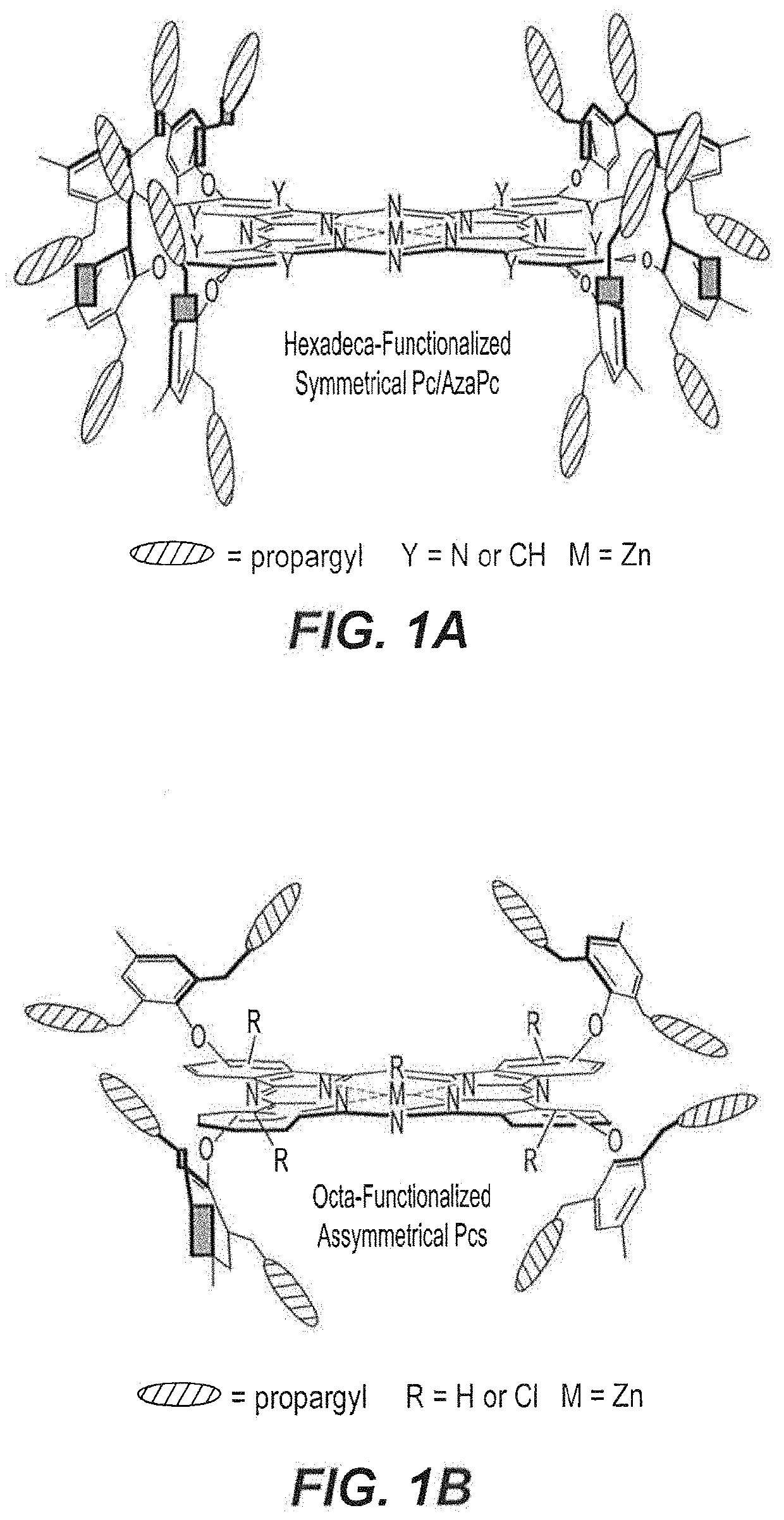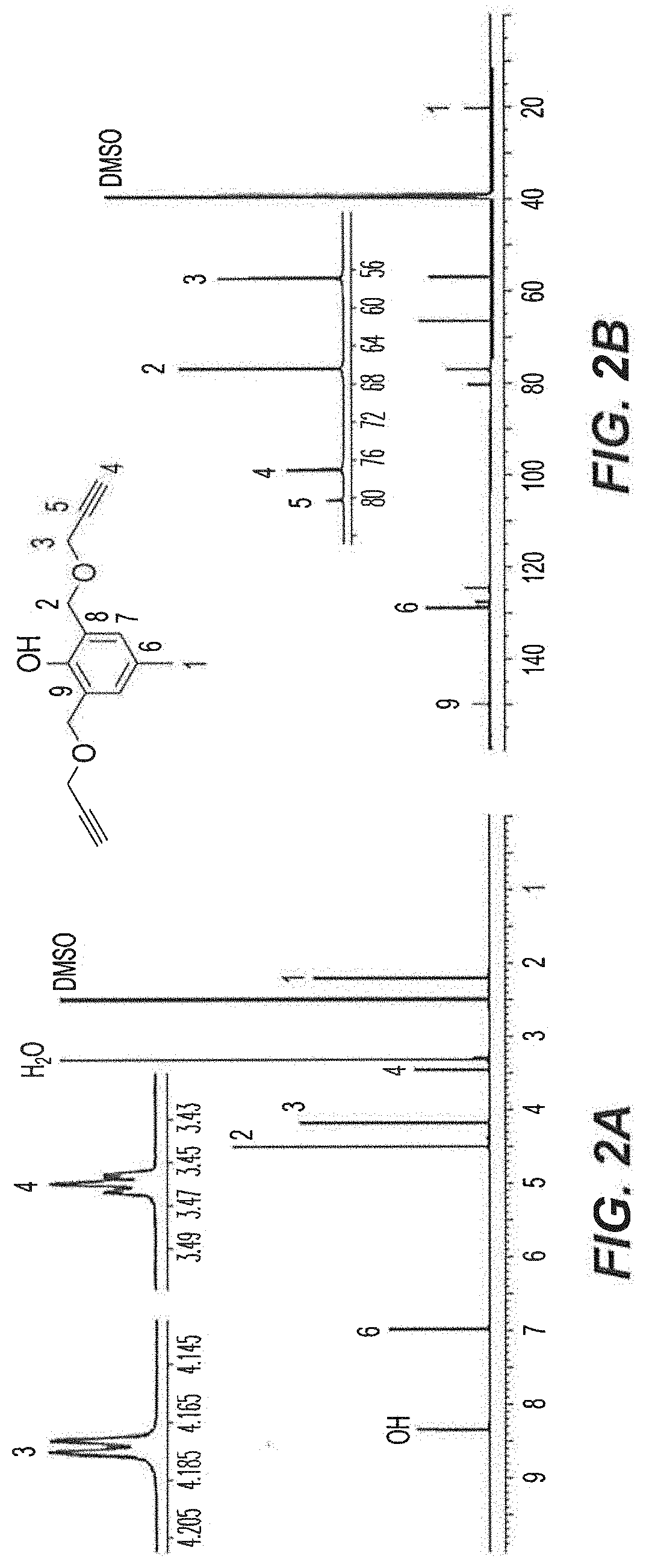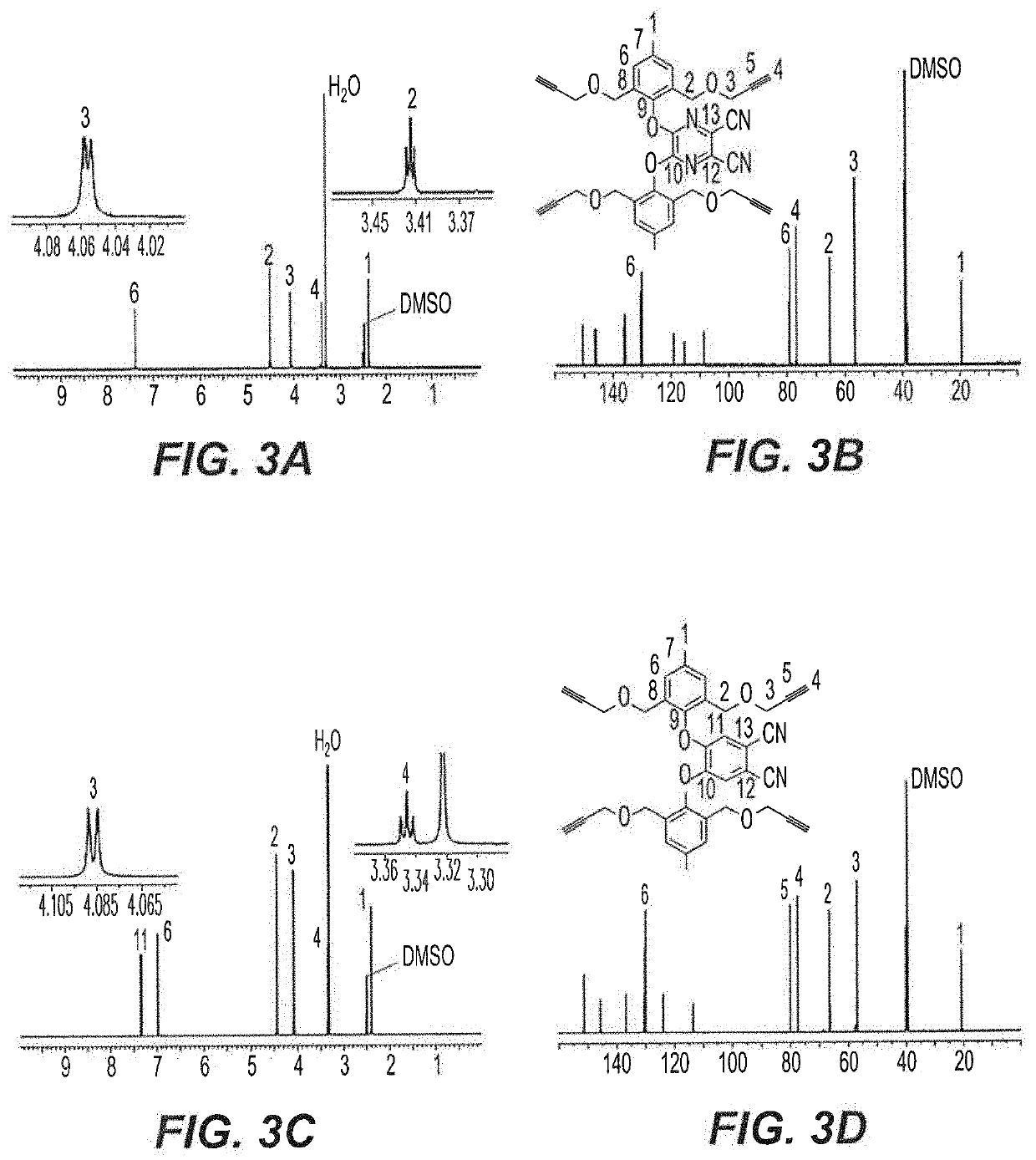Propargyl-functionalized macrocyclic compounds
- Summary
- Abstract
- Description
- Claims
- Application Information
AI Technical Summary
Benefits of technology
Problems solved by technology
Method used
Image
Examples
example 1
Synthesis of di-propargyl p-cresol 2
[0060]Initially, 2,6-bis(methylbromo)-p-cresol 1 was prepared in 51% yield according to the procedure described in Example 13 herein upon the reaction of 2,6-bis(methylhydroxyl)-p-cresol with 33% HBr in glacial acetic acid. As shown in the reaction scheme below, Compound 1 was then treated with propargyl alcohol for the synthesis of di-propargyl-p-cresol 2. The reaction was performed in dry tetrahydrofuran (THF) in the presence of NaH (60%) at 0° C. to room temperature, overnight to obtain the desired product 2 in 55% yield.
[0061]The novel cresol derivative 2 was fully characterized using NMR, HRMS and FT-IR spectral data and CHNX elemental analysis (FIGS. 2A-2B). In the 1H-NMR spectrum (600 MHz, DMSO-d6, 25° C.) (FIG. 2A), the benzylic protons (—CH3, H1) were observed as a singlet at 2.20 ppm; terminal ethynyl protons (—C∘CH, H4) were observed as a triplet at 3.46 ppm with a J-value of 2.6 Hz; methyleneoxy protons (—CH2OCH2CCH, H3) were observed ...
example 2
Synthesis of Tetra- and Di-Propargyl Precursors 3-7
[0062]Cresol derivative 2 undergoes a nucleophilic substitution reaction for the synthesis of tetra-propargyl (3 and 4) and di-propargyl (5-7) precursors. As shown in the reaction schemes below and described in detail in Examples 14-17 herein, AzaPc-subunit 3 was obtained in gram quantity (97%) upon the reaction of compound 2 with 5,6-dichloro-2,3-dicyan-1,4-pyrazine in the presence of anhydrous K2CO3 in dry acetonitrile (25° C.) room temperature, overnight, while Pc-precursor 4 was obtained at a rate of 64% from the reaction of cresol derivative 2 with 4,5-dichlorophthalonitrile in the presence of anhydrous CsF in hot dry DMF (100° C. to room temperature, overnight).
[0063]For mono-phenoxyl substituted Pc-intermediates, 4,5-dichloro, 4- and 3-nitrophthalonitriles were employed as starting materials for synthesis of di-propargyl Pc-precursors 5-7, respectively. As shown in the reaction schemes below, the reaction of 4,5-dichlorophtha...
example 3
Synthesis of AzaPc1 / Pc2-Pc5
[0064]As depicted in the reaction schemes below, all precursors 3-7 were subjected to zinc (II) mediated cyclotetramerization reactions for the construction of hexadeca- and octa-propargyl functionalized macrocyclic structures, AzaPc1 and Pc2-Pc5. All reactions were performed in dry pentanol in the presence of Zn(OAc)2 and a catalytic amount of DMEA at high temperature (140° C.). The cyclization processes were carried out for 2-5 hours and resulted in formation of zinc (II) cyclic-tetramers in yields of 28-43%.
PUM
| Property | Measurement | Unit |
|---|---|---|
| Temperature | aaaaa | aaaaa |
| Temperature | aaaaa | aaaaa |
| Temperature | aaaaa | aaaaa |
Abstract
Description
Claims
Application Information
 Login to View More
Login to View More - Generate Ideas
- Intellectual Property
- Life Sciences
- Materials
- Tech Scout
- Unparalleled Data Quality
- Higher Quality Content
- 60% Fewer Hallucinations
Browse by: Latest US Patents, China's latest patents, Technical Efficacy Thesaurus, Application Domain, Technology Topic, Popular Technical Reports.
© 2025 PatSnap. All rights reserved.Legal|Privacy policy|Modern Slavery Act Transparency Statement|Sitemap|About US| Contact US: help@patsnap.com



